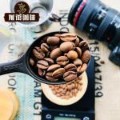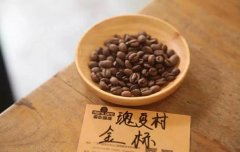From Ethiopia, the evolution of coffee varieties trends
However, the earliest first harvest in human history, and the most recorded coffee is the iron pickup in Ethiopia. At the beginning, through the natural, artificial cultivation, research and development of coffee producing areas, countless varieties have been introduced, and more than 120 varieties have been introduced so far.
In the second section, the characteristics of representative varieties will be introduced. However, before that, I hope to have the following concepts, processing methods and planting environment and other factors will affect raw beans, so we can not just classify them according to varieties and regard them as a single and absolute characteristic.
Typica: the most classic high-quality Arabica species, which is derived from many commercial improvements at present. It has excellent taste and is recognized as a boutique coffee variety, but its yield is very low and it is vulnerable to rust, so more manpower management is needed. Tieka Coffee, native to Ethiopia and southeastern Sudan, is the most widely cultivated variety of coffee in the Western Hemisphere. The plant is stronger, but not light-tolerant, and the yield is higher in Hawaii. The top leaf of the iron pickup is red copper, which is called red top coffee.
Side coffee (French: Caf é Bourbon) is a kind of coffee produced by growing coffee trees in bourbon cultivation of Arabica coffee. Bourbon coffee was originally grown in Reunion, which was also known as bourbon Island (? le Bourbon) before 1789. It was later occupied by France to connect with the African continent and Latin America, and it is now one of the two most popular producers of Arabica coffee in the world. Bourbon coffee is usually produced between 3500 and 6500 feet above sea level, with a variety of flavors, low acidity and a smooth taste.
Mondonovo Mundo Novo
Recent natural variants include the Mundo Novo, which appeared only in 1920, and the Mundo Novo bean, whose name means "new world" in Portuguese, is widely cultivated in Brazil, especially in large coffee plantations. Up to 35% of Brazilian coffee comes from "new world" beans. The plant of bean seed is very tall, high yield, strong adaptability, strong root system, green and brass leaves, red fruit and good flavor.
Kaddura Caturra
. The general coffee fruit is red when ripe, but the yellow bourbon is yellow when it is ripe, which is a unique yellow bourbon variety in the state of Sao Paulo, Brazil. In the past two years, the Brazilian extraordinary cup was almost won by yellow bourbon. 4. Kaddura (Caturra): a single gene variant of bourbon, found in Brazil in the 1950 s, its production capacity and disease resistance are stronger than bourbon, its flavor is comparable, it is suitable for planting at 700m-1700 m, and it can adapt to altitude.
Catuai Caduai, a dwarf coffee tree produced in Brazil in 1950 by the hybrid of Yellowskin Cadura and Mundo Novo Mondonovor (New World), has a better ability to resist natural disasters, especially wind and rain. It inherits the advantages of Kaddura's low stature and changes Mondonwood's shortcomings. Another advantage is that the result is solid, and it is not easy to fall off when the strong wind blows, which makes up for the weakness of Arabica fruit, but the overall flavor is more monotonous than Kaddura, monotonous and less mellow, which is the greatest pity. In addition, the fruit growth and harvest life is only about ten years, and the short life span is also one of the weaknesses.

Important Notice :
前街咖啡 FrontStreet Coffee has moved to new addredd:
FrontStreet Coffee Address: 315,Donghua East Road,GuangZhou
Tel:020 38364473
- Prev

Rosy summer, the new pet of coffee trend?
Rose summer is a popular variety that has become popular in the coffee industry over the past few years. Many contestants participating in the World Barista Competition and other competitions have used the Rosa seed to participate in the competition, and many people have achieved good results as a result. In particular, in the 16-year World Barista Competition, four of the six finalists, including the champion berg wu of Taiwan, chose rose summer coffee.
- Next

[rose summer] special show! 6 Panama & Essex Coffee Competition! 30% discount on Blue Mountain package!
Professional coffee knowledge exchange more coffee bean information please follow the coffee workshop (Wechat official account cafe_style) [Rose Summer] discount special! This special event [Qianjie Coffee] will present you with two selected ears, five kinds of concessionary rations beans and eight kinds of boutique beans! A 20% discount for all single beans! The combination of 4 top Rose Summer products and 2 Rose Summer products has more Blue Mountain discount sets.
Related
- What is the standard process for the purpose of coffee cup testing? What is the difference between hand-brewed coffee and cup testing?
- How to use hand-brewed coffee paragon small golden balls? How does cold coffee lock in the aroma of coffee?
- Is American coffee black? What is the difference between American coffee and drip coffee?
- Unexpected! Well-known tea beverage brand Lele Tea will withdraw from the Zhengzhou market!
- Starbucks enters the fashion and beauty industry?! Netizen: Give me an ice American eye cream
- Why can American refills for free? The difference between Americano and American drip pot coffee
- Being chased out of the rain in front of Starbucks?! Store: Sheltering from rain under umbrellas poses a safety hazard
- The white moonlight has changed?! Lucky launches "Big Winter Pear American"
- Hand-brewed coffee three-stage method, high-sweet and universal brewing method to share! What does the high sweet water level of hand-brewed coffee mean?
- What is the difference between raw, refined and full espresso coffee? How to extract espresso and taste good?

